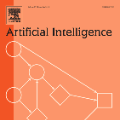Whereas MRI produces anatomic information about the brain, functional MRI (fMRI) tells us about neural activity within the brain, including how various regions communicate with each other. The full chorus of conversations within the brain is summarized elegantly in the adjacency matrix. Although information-rich, adjacency matrices typically provide little in the way of intuition. Whereas trained radiologists viewing anatomic MRI can readily distinguish between different kinds of brain cancer, a similar determination using adjacency matrices would exceed any expert's grasp. Artificial intelligence (AI) in radiology usually analyzes anatomic imaging, providing assistance to radiologists. For non-intuitive data types such as adjacency matrices, AI moves beyond the role of helpful assistant, emerging as indispensible. We sought here to show that AI can learn to discern between two important brain tumor types, high-grade glioma (HGG) and low-grade glioma (LGG), based on adjacency matrices. We trained a convolutional neural networks (CNN) with the method of deep neuroevolution (DNE), because of the latter's recent promising results; DNE has produced remarkably accurate CNNs even when relying on small and noisy training sets, or performing nuanced tasks. After training on just 30 adjacency matrices, our CNN could tell HGG apart from LGG with perfect testing set accuracy. Saliency maps revealed that the network learned highly sophisticated and complex features to achieve its success. Hence, we have shown that it is possible for AI to recognize brain tumor type from functional connectivity. In future work, we will apply DNE to other noisy and somewhat cryptic forms of medical data, including further explorations with fMRI.
翻译:MRI 生成有关大脑的解剖信息, 功能性磁共振(fMRI) 告诉我们大脑内神经活动, 包括各个区域如何相互交流。 大脑内谈话的全部合奏在相邻矩阵中被精细地概括。 虽然信息丰富, 相邻矩阵通常很少提供直觉方法。 由受过训练的放射学家观看解剖磁共振可以很容易区分不同的脑癌类型, 使用相邻矩阵的类似测定将超过任何专家的掌握范围。 放射学的人工智能通常分析解剖成像, 向放射学家提供援助。 对于非直观的数据类型, 如相邻矩阵, 大脑内谈话的全部合。 虽然信息丰富, 相邻矩阵通常很少提供直观的直观信息。 虽然经过训练的放射师能够辨别两种重要的脑肿瘤类型, 高等级的巨型和低等级的螺旋矩阵(LGGGI), 基于相近的矩阵, 我们训练了直径直径直径直径直径的神经网络( 直径的直径直径直径直径直径直径直径直径直径直径直径直径直径直径直径直径直径, ) 和直径直径直径直径直径直的直的直地,,,, 直直直的直的直的直直直直直地,, 直的直直直直直距離的直径直径向直直的直的直的直的直的直的直的直距直的直的直的直的直路路路路路路路路路路路路路路路路路路路徑道的直路路路路路路路路路路路路路,, 直至直的直的直地, 直地, 直地, 直地, 直地, 直地, 直地, 直地, 直地, 直至直至直至直至直至直至直至直至直至直至直至直至直至直直直直直直直直直直直直直直直路直路直距列列列列列列直路徑的直至直至直至直至直至直至直路直路直路直路直路直



